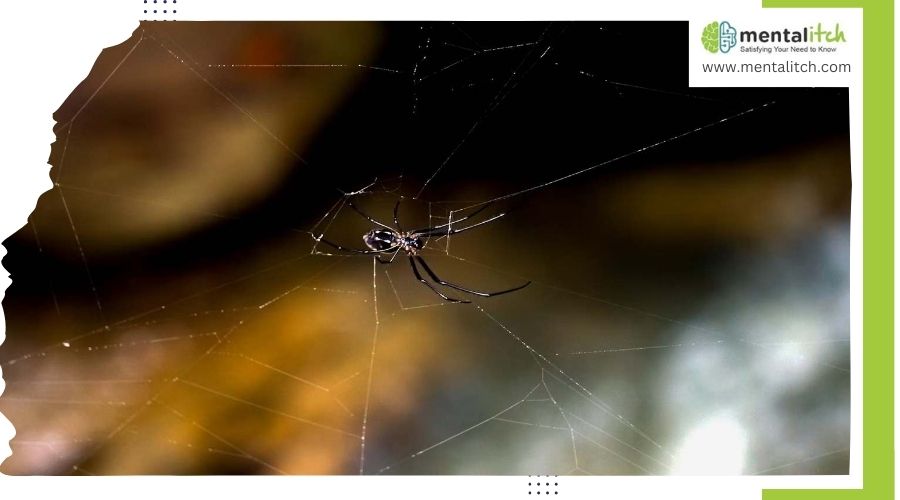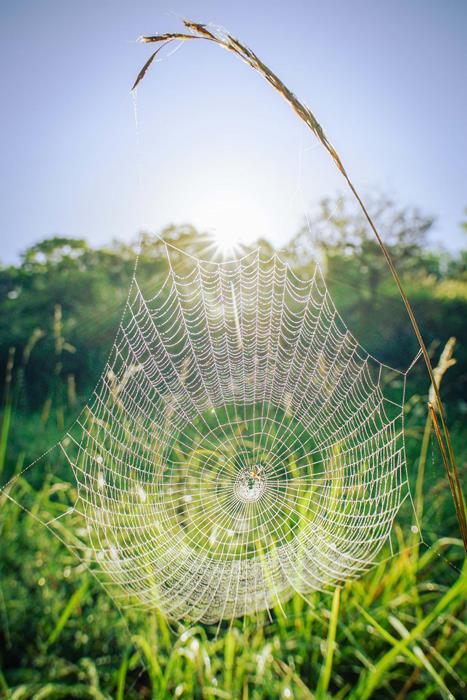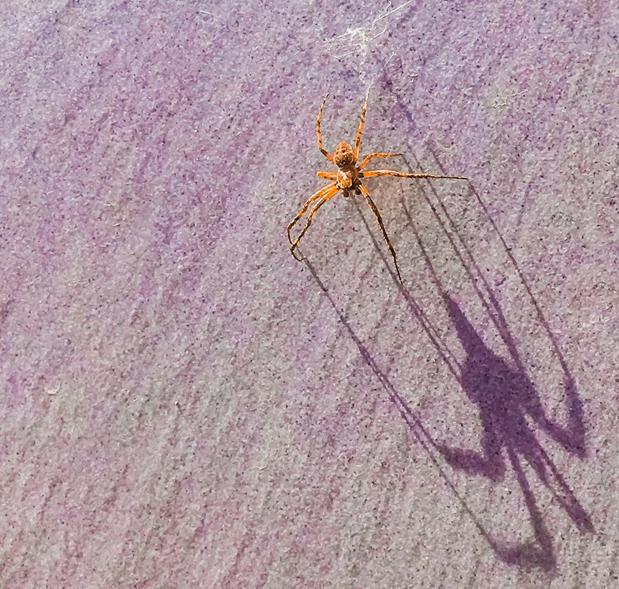Spitting spiders stand out in the spider world, belonging to the Scytodidae family. Unlike their web-spinning or ground-hunting relatives, these spiders have a unique trick up their sleeve. They don’t just chase or ambush their prey; they have a special method that sets them apart. Found in various parts of the world, these spiders have adapted to a wide range of environments, showcasing the diversity and ingenuity of nature’s hunters.
Studying how spitting spiders catch their meals is not just fascinating; it gives us valuable insights into the complexity of nature. By looking at their hunting techniques, we learn more about the balance of ecosystems, the evolutionary arms race between predators and prey, and even find inspirations for scientific and technological advancements. Understanding these natural processes helps us appreciate the intricate connections that sustain life on Earth.
What makes spitting spiders truly remarkable is their distinctive way of capturing prey. Instead of running after their targets or ensnaring them in webs, these spiders use a precise and efficient method: they spit. But this is no ordinary spit—it’s a combination of venom and silk that immobilizes their prey from a distance. This hunting strategy is not only effective but also a brilliant display of nature’s ingenuity, allowing the spitting spider to subdue its prey with remarkable accuracy and efficiency.
The Anatomy of the Spitting Spider
The spitting spider boasts features that make it a master hunter. At first glance, you might notice its medium size and the long, slender legs that give it a stealthy advantage. These legs are not just for show; they allow the spider to tiptoe close to its prey, almost undetected. The eyes of the spitting spider are another marvel. Positioned to give a wide field of view, they help in spotting potential meals from a distance. This combination of stealth and keen eyesight makes the spitting spider an adept hunter, capable of strategizing and executing its unique hunting method with precision.
Specialized Glands for Venom and Silk Production
Now, onto the spitting spider’s secret weapon: its spit, a unique blend of venom and silk. This concoction is made possible by specialized glands found in the spider’s head. Think of these glands as tiny, high-tech factories, each with a specific job. One set of glands produces the venom that immobilizes the prey, while another set works on creating the sticky silk. When the spider decides it’s time to strike, these glands spring into action, mixing their products to create the spider’s signature spit. This ingenious natural mechanism allows the spitting spider to capture its prey in a way that is both efficient and safe, keeping it out of harm’s way.
Hunting Strategy of the Spitting Spider
Once a potential prey catches its eye, the spider moves with a stealth that rivals the best of predators. It uses its long legs to approach silently, ensuring it doesn’t alert its soon-to-be lunch. This slow, calculated approach is crucial, as it allows the spider to get within the perfect range for its spitting attack. It’s a game of patience and position, where the spitting spider excels.
The Role of Visual and Sensory Detection in Prey Capture
Sight and touch play pivotal roles in the spitting spider’s hunting playbook. Its eyes, sharp and capable of detecting movement, are its first line of surveillance. They help the spider spot prey from a distance and plan its approach. But it’s not just about seeing; it’s also about feeling. The spider’s legs are covered in sensitive hairs that can pick up vibrations in the air or on the surface it’s walking on. These vibrations tell the spider all it needs to know about the size, speed, and location of its prey, guiding it as it moves in for the capture.
Mechanism of Spitting
The spit of a spitting spider is not your average drool; it’s a sophisticated cocktail designed for maximum impact. This special blend combines venom, which paralyzes the prey, with a unique type of silk, sticky and quick to harden upon contact with air. Imagine having a glue gun that also delivers a knockout punch—that’s pretty close to what these spiders wield.
The Spitting Process: How the Spider Projects Its Spit
When it’s time to attack, the spitting spider turns into a skilled marksman. The process is both rapid and precise. The spider aligns its body, takes aim, and ejects its spit through its fangs. This isn’t a slow dribble but a quick, forceful spray, shot out in a pattern that covers the target effectively. The spider can do this because it has developed muscles specifically for this task, allowing it to project its spit with surprising speed and accuracy.
The accuracy and range of the spitting spider’s attack are nothing short of remarkable. It can accurately hit targets up to several inches away—a considerable distance, given the small size of the spider. This precision is vital because it allows the spider to subdue prey without engaging in a potentially dangerous tussle.
Subduing the Prey
Once the spitting spider’s spit hits its target, the effects are almost instant. The prey, caught off guard, finds itself suddenly immobilized. This swift action is crucial, as it prevents the prey from escaping or fighting back.
Role of Venom in Immobilizing the Prey
The venom in the spider’s spit plays a key role in this immobilization process. Once it makes contact, the venom works quickly to paralyze the prey. It’s like a lightning-fast anesthetic, numbing the prey to prevent it from moving. This is not just about stopping the prey in its physical tracks; the venom also works to reduce the prey’s chances of escape by weakening its muscles and bodily functions.
But it’s not just the venom doing all the work. The silk component of the spit wraps around the prey, adding an extra layer of security. This silk acts like the strongest handcuffs, entangling the prey in a sticky net from which there is no escape. The silk hardens quickly, reinforcing the spider’s grip on its meal.
Feeding Behavior
Once the spitting spider has successfully subdued its prey, it cautiously approaches. This careful advance ensures that the prey is fully immobilized and poses no threat. The spider uses this time to assess its catch, ensuring it’s safe to proceed.
The feeding process for the spitting spider is as unique as its hunting technique. It doesn’t eat its prey in the conventional sense. Instead, it starts with external digestion. The spider injects digestive enzymes into the prey, which break down the prey’s body from the inside out. This process turns the prey into a liquid meal, which the spider then sucks up. This might sound a bit gruesome, but it’s an efficient way to consume everything nutritious from the prey. This method allows the spider to bypass any hard exoskeleton or other indigestible parts, ensuring it gets all the essential nutrients without any waste.
Ecological Impact and Benefits
Spitting spiders play a crucial role in maintaining the balance of insect populations. By preying on various insects, they help prevent any single species from becoming too dominant, which could lead to crop damage or the spread of disease. This natural form of pest control supports agriculture and garden health, reducing the need for chemical pesticides. It’s a perfect example of how nature keeps itself in check, with spitting spiders acting as unsung heroes in the background.
Conclusion
Spitting spiders, with their unique hunting methods and fascinating feeding behavior, offer a glimpse into the complexity and ingenuity of nature. Their ability to control insect populations underscores their importance in maintaining ecological balance and biodiversity. By employing a combination of venom and silk to immobilize their prey, they not only demonstrate remarkable evolutionary adaptations but also contribute significantly to the health of ecosystems. Grasping the function of these unusual spiders enables us to value the complex links and relationships that shape the natural world. Despite their size, spitting spiders are crucial in maintaining life’s equilibrium, highlighting the fragile harmony that supports the biodiversity of our planet.


